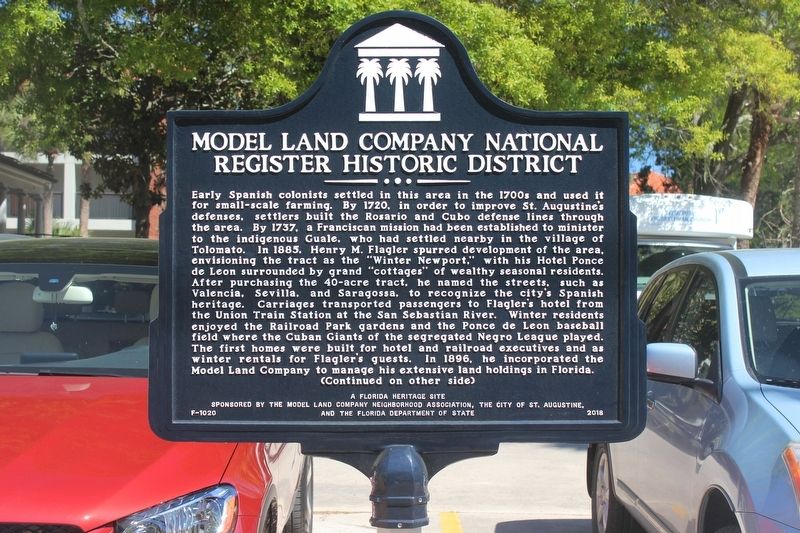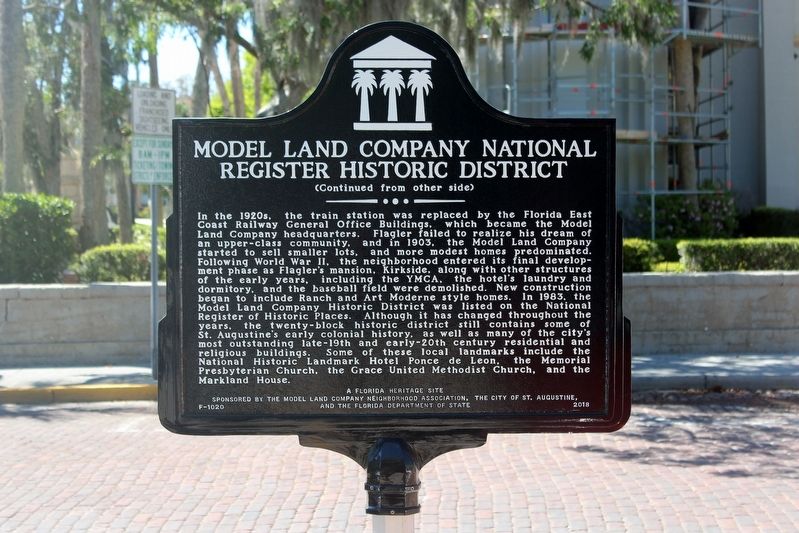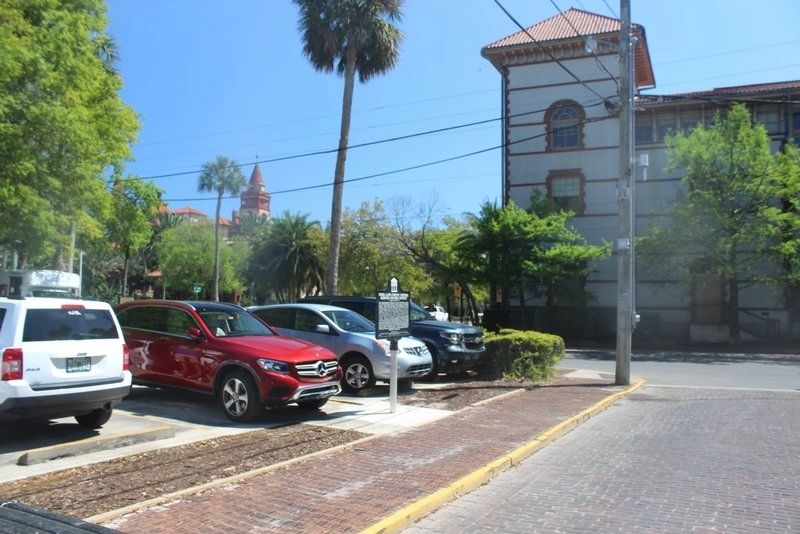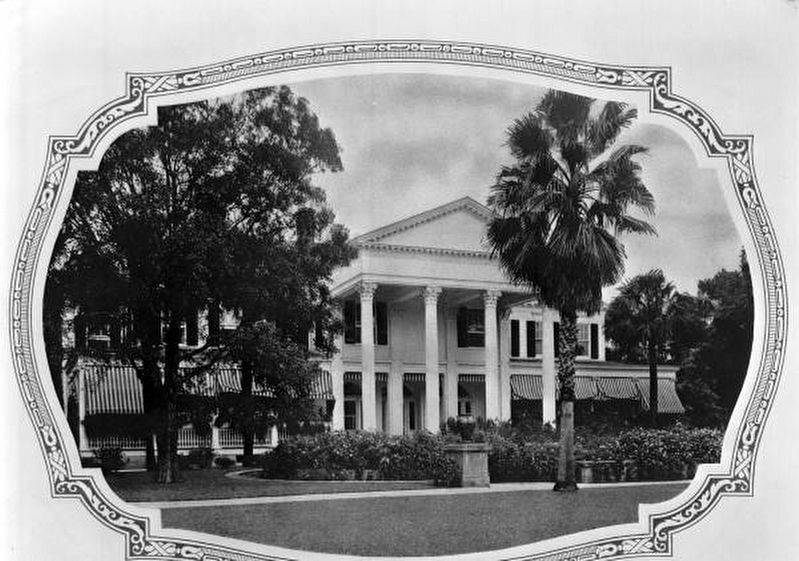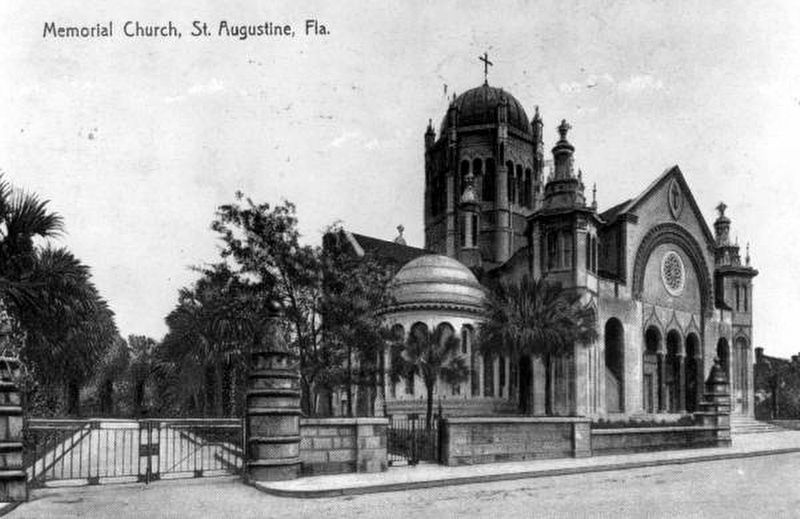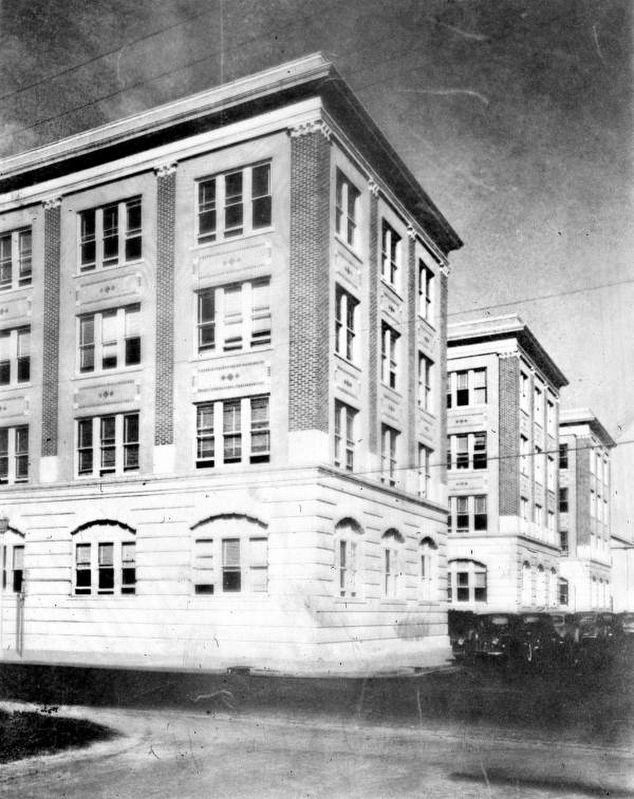Historic District in St. Augustine in St. Johns County, Florida — The American South (South Atlantic)
Model Land Company National Register Historic District
Inscription.
Early Spanish colonists settled in this area in the 1700s and used it for small-scale farming. By 1720, in order to improve St. Augustine's defenses, settlers built the Rosario and Cubo defense lines though the area. By 1737, a Franciscan mission had been established to minister to the indigenous Guale, who had settled nearby in the village of Tolomato. In 1885, Henry M. Flagler spurred development of the area, envisioning the tract as the "Winter Newport," with his Hotel Ponce de Leon surrounded by grand "cottages" of wealthy seasonal residents. After purchasing the 40-acre tract, he named the streets, such as Valencia, Sevilla, and Saragossa, to recognize the city's Spanish heritage. Carriages transported passengers to Flagler's hotel from the Union Train Station at the San Sebastian River. Winter residents enjoyed the Railroad Park gardens and the Ponce de Leon baseball field where the Cuban Giants of the segregated Negro League played. The first homes were built for hotel and railroad executives and as winter rentals for Flagler's guests. In 1896, he incorporated the Model Land Company to manage his extensive land holdings in Florida.
In the 1920s, the train station was replaced by the Florida East Coast Railway General Office Buildings, which became the Model Land Company Headquarters. Flagler failed to realize his dream of an upper-class community, and in 1903, the Model Land Company started to sell smaller lots, and more modest homes predominated. Following World War II, the neighborhood entered its final development phase as Flagler's mansion, Kirkside, along with other structures of the early years, including the YMCA, the hotel's laundry and dormitory, and the baseball field were demolished. New construction began to include Ranch and Art Moderne style homes. In 1983, the Model Land Company Historic District was listed on the National Register of Historic Places. Although it has changed throughout the years, the twenty-block historic district still contains some of St. Augustine's early colonial history, as well as many of the city's most outstanding late-19th and early-20th century residential and religious buildings. Some of these local landmarks include the National Historic Landmark Hotel Ponce de Leon, the Memorial Presbyterian Church, the Grace United Methodist Church, and the Markland House.
Erected 2018 by The Model Land Company Neighborhood Association, The City of St. Augustine, and the Florida Department of State. (Marker Number F-1020.)
Topics and series. This historical marker is listed in these topic lists: Agriculture • Architecture
• Colonial Era • Settlements & Settlers. In addition, it is included in the Florida East Coast Railroad and Hotels, and the National Register of Historic Places series lists. A significant historical year for this entry is 1896.
Location. 29° 53.617′ N, 81° 18.984′ W. Marker is in St. Augustine, Florida, in St. Johns County. It is in the Historic District. Marker is at the intersection of Sevilla Street and Valencia Street, on the right when traveling north on Sevilla Street. Located across Sevilla Street from the Flagler Memorial Presbyterian Church. Touch for map. Marker is at or near this postal address: 38 Sevilla St, Saint Augustine FL 32084, United States of America. Touch for directions.
Other nearby markers. At least 8 other markers are within walking distance of this marker. Flagler Memorial Presbyterian Church (within shouting distance of this marker); Anderson Cottage (about 300 feet away, measured in a direct line); Markland (about 700 feet away); Spanish Dragoon Barracks (about 700 feet away); Grace United Methodist Church (about 700 feet away); a different marker also named Grace United Methodist Church (about 700 feet away); Ponce de Leon Hotel
(about 700 feet away); Villa Zorayda (about 800 feet away). Touch for a list and map of all markers in St. Augustine.
Credits. This page was last revised on January 16, 2021. It was originally submitted on June 30, 2019, by Tim Fillmon of Webster, Florida. This page has been viewed 467 times since then and 65 times this year. Photos: 1, 2, 3, 4, 5, 6. submitted on June 30, 2019, by Tim Fillmon of Webster, Florida. • Bernard Fisher was the editor who published this page.
